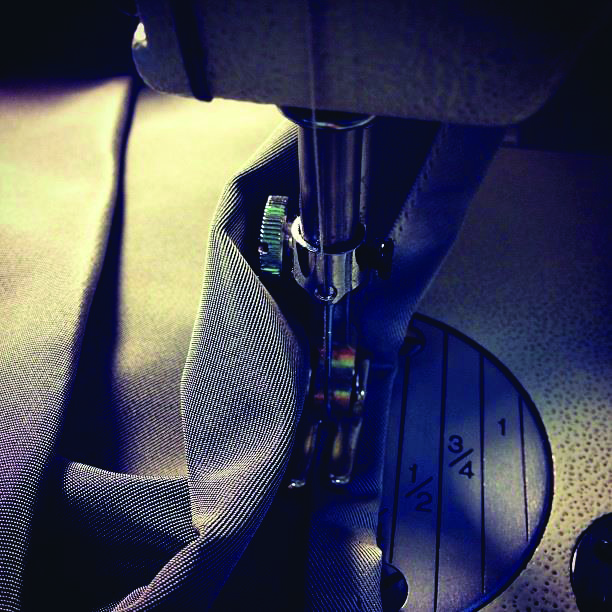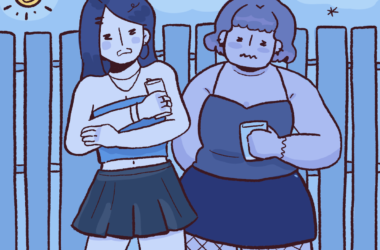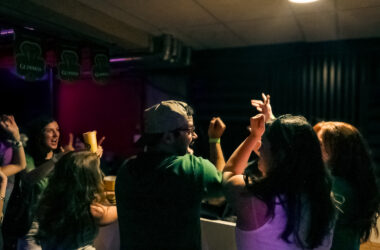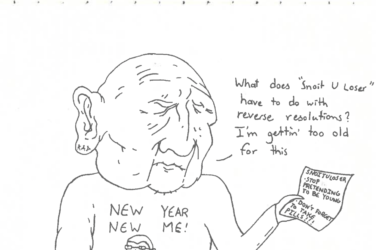As frustration with consumer culture grows, some creatives are choosing to stop buying ready-made goods and start producing objects themselves. Often referred to as the ‘Maker Movement,’ this recent trend involves creating just about anything—from knitting a scarf to forging a knife. Some participants aim to save money by making their own products, while others seek an outlet to relieve stress. The crafting industry has grown significantly within the past decade, with the largest percentage of the demographic between the ages 18 and 34.
Social media provides ample inspiration for the prospective maker. In 2017, the most popular category on Pinterest was ‘Art & Crafts.’ The platform delivers simple and thrifty crafting ideas that are particularly appealing to a younger audience that might need visual inspiration. Similarly, on Youtube, ‘how-to videos’ are one of the most-viewed categories on the site. One mother built an entire house using Youtube tutorials to save money and still enjoy her dream home. For people looking to learn a craft, a simple Google search can provide all of the necessary information to start.
The rise of do-it-yourself (DIY) culture is also attributable to a growing consciousness of the ethical impact of commercial products. Documentaries like The True Cost show that ‘fast fashion’—cheaply made, trendy clothes—often relies on exploitative labour and produces massive amounts of environmentally-harmful waste. Phoebe Pannier, U2 Arts, sews and embroiders her own clothes, rather than buying them, as a way to combat the ethical drawbacks of the fashion industry.
“The disposability of clothing […] really distances consumers from the objects around them,” Pannier said. “Making something for yourself allows you to deconstruct what you take for granted about material goods.”
For many makers, the act of creating something makes them more aware of the amount of work that goes into producing a single item. Corrina Greenler, U2 Arts, recently took a pottery workshop and was surprised at how much work and time was required to craft a small ceramic piece.
“It made me appreciate using [something that I made] much more,” Greenler said. “It’s satisfying to know that I made something cool out of just a block of clay.”
Though DIY stands for ‘do it yourself,’ many crafters find that the process of hand-making an item can bring people together. Olivia Mendelson, U2 Arts & Sciences and the vice-president communications of the McGill Students Knitting Club explained that club meetings provide participants with an opportunity to get assistance with their knitting projects.
“It’s hard to find people to knit with, but, when people do get together and knit and talk about knitting, it creates a really amazing community atmosphere,” Mendelson said. “More experienced knitters are always there to help beginners if they run into issues.”
Some crafters find that making things connects them not only with their peers, but also with past generations. Pannier, for example, learned to knit from her grandmother.
For stressed McGill students, it might seem like there simply is not enough time to pick up a new hobby. Pannier, however, finds moments throughout the day to incorporate crafting to make mundane tasks a bit more interesting.
“I [do crafts] while I’m doing other stuff, like, if I’m listening to a lecture recording, I’ll embroider, or, if I’m in a boring work meeting, I’ll take out my knitting,” Pannier said.
Similarly, Mendelson believes that the process of making something can act as a valuable form of self-care for overwhelmed students. She finds the repetitive movements of knitting calming.
“Hands-on crafts force you to slow down and focus on what you’re doing in the moment, which isn’t something we often take the time to do, especially as busy students,” Mendelson said.
The trend of ‘doing it yourself’ simultaneously promotes a sense of individuality and of community. Crafters come together to produce and share their creations.
“Our ancestors had to make their own stuff out of necessity, so it’s kind of a way of connecting with the past,” Greenler said. “Creating is what makes us human.”







